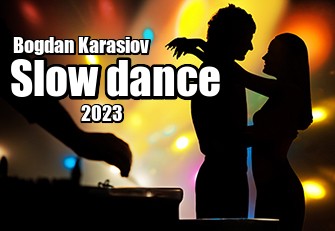The history of the emergence of slow dance does not have an exact origin and date, but it became very popular in the early 20th century, that is, in times very close to ours (at least, I tend to look at a hundred +/- years as a very small period time, on a historical scale).
Because the slow dance is full of romance and emotion, it has become a symbol of love and passion.

Of course, there are many varieties and styles of what we call "slow dance". Today I bring to your attention my slow dance, which contains elements of chillstep, bachata and... lambada.
Yes, lambada itself is not a slow dance, but I remixed it very deeply and slowed it down. So deep that if I didn't tell you about it, hardly anyone would recognize it (especially since it's not a direct remix of lambada, but only contains some remixed elements of it). As a result, the sound turned out to be gentle and unusual, according to me.
Slow dancing began to gain widespread popularity in the early 20th century in dance halls, where couples danced to soft music. Of course, dancing has always been very popular more among young couples looking for a way to spend time together and enjoy the moment.
In the 1920s, the slow dance became a symbol of the Jazz Age and was danced at every party and celebration.
Today, the slow dance is one of the most popular dances at weddings and other formal events. It has become a symbol of romance and love, and will never lose its popularity as long as there are relationships between people.
The same experience with remixing lambаda elements gave me interesting conclusions. I think, in principle, you can take any style of music and make a slow dance based on it. It is interesting to experiment.
Comments